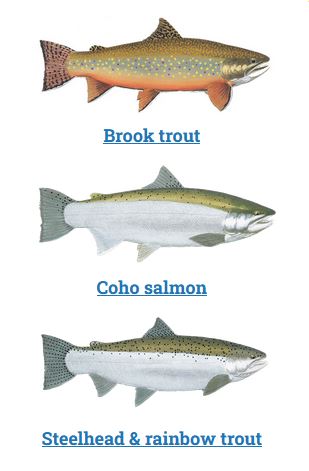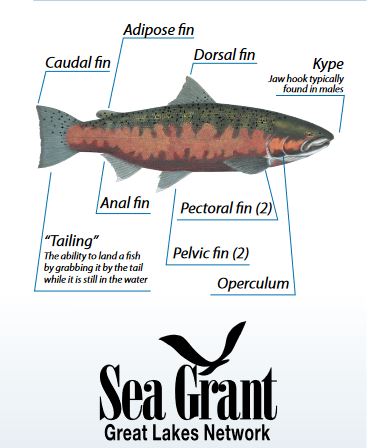
Fish Identification
Minnesota Steelheader has put together Great Lakes trout and salmon identification, ID Tag, and fin clip resources for you here. Want to know the differences between a chinook and a coho? Want to know why one tag is gray and the other yellow? Why is that fish missing a fin? Check out the information and links below.
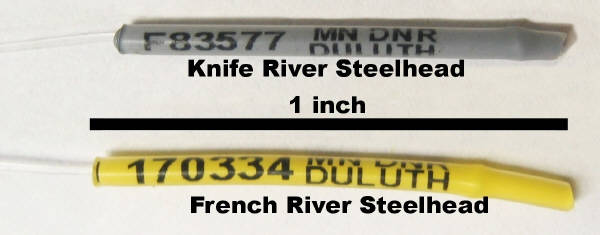
Tagging and marking are important techniques fisheries biologists use to study individual fish or populations of fish like steelhead. Individual fish are tagged or marked to obtain critical information necessary for research or management.
Individual numbered tags like those shown above are inserted at the base of the dorsal fin of hatchery (clipped) and wild steelhead that are caught at the Knife and French river fish traps. Numbered grey tags are used on steelhead that return to the Knife River, and numbered yellow tags are used at the French River trap. Individual numbered tags are used to gather information on steelhead movement patterns within Lake Superior, occurrence of repeat spawning, age and growth, and trap efficiency.
By reporting tagged or marked fish, the information you provide can assist in:
- Stock Identification: Determining whether stocks or sub-populations are being utilized for sport or commercial fisheries
- Migrations: Figuring out the path and distance of migration, rate of movement, and homing tendencies of a species
- Behavior: Identifying factors that limit abundance such as habitat selection, and interactions within and between species
- Age: Validation of aging methods and determining growth rates
- Mortality Rates: Monitoring the effects of natural and fishing mortality on a population
- Abundance: Using mark and recapture experiments to measure the number or amount of a fish in a given area (biomass)
- Stocking Success: Tracking the results of stocking hatchery-reared fish
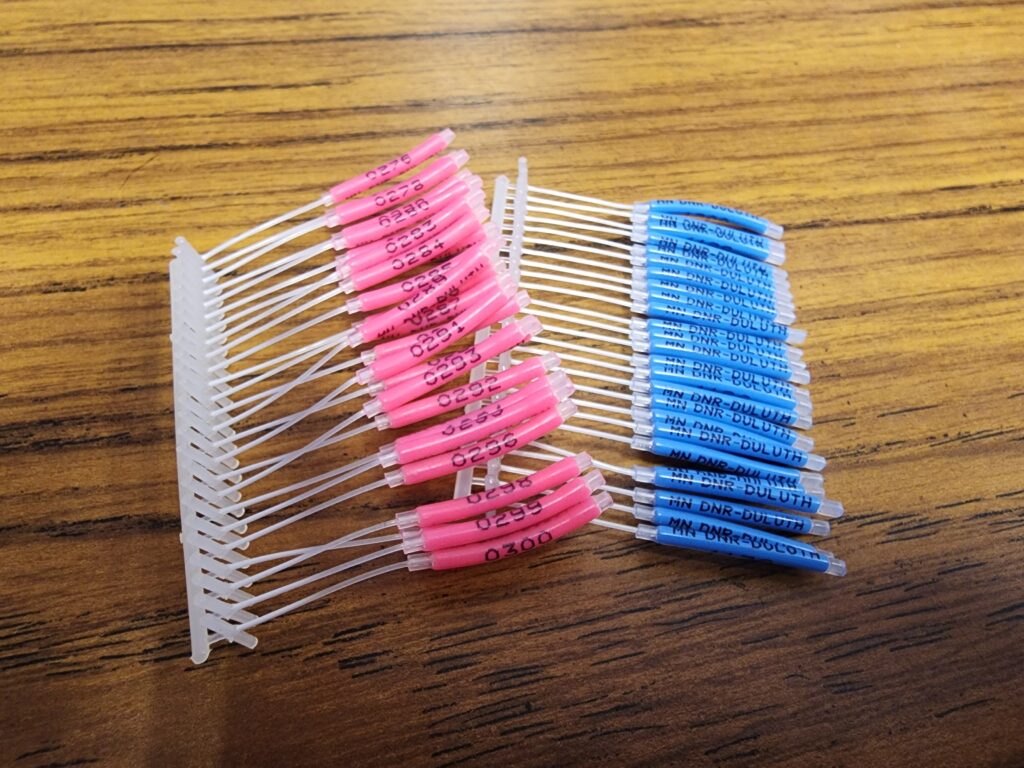
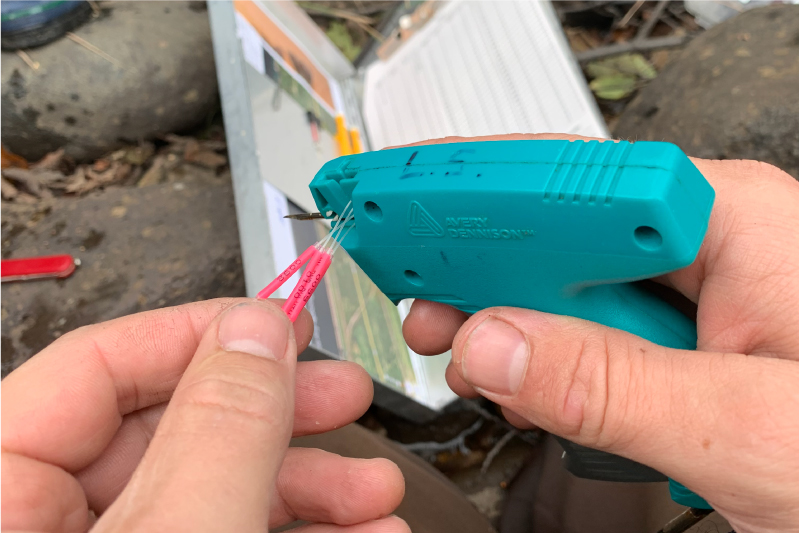
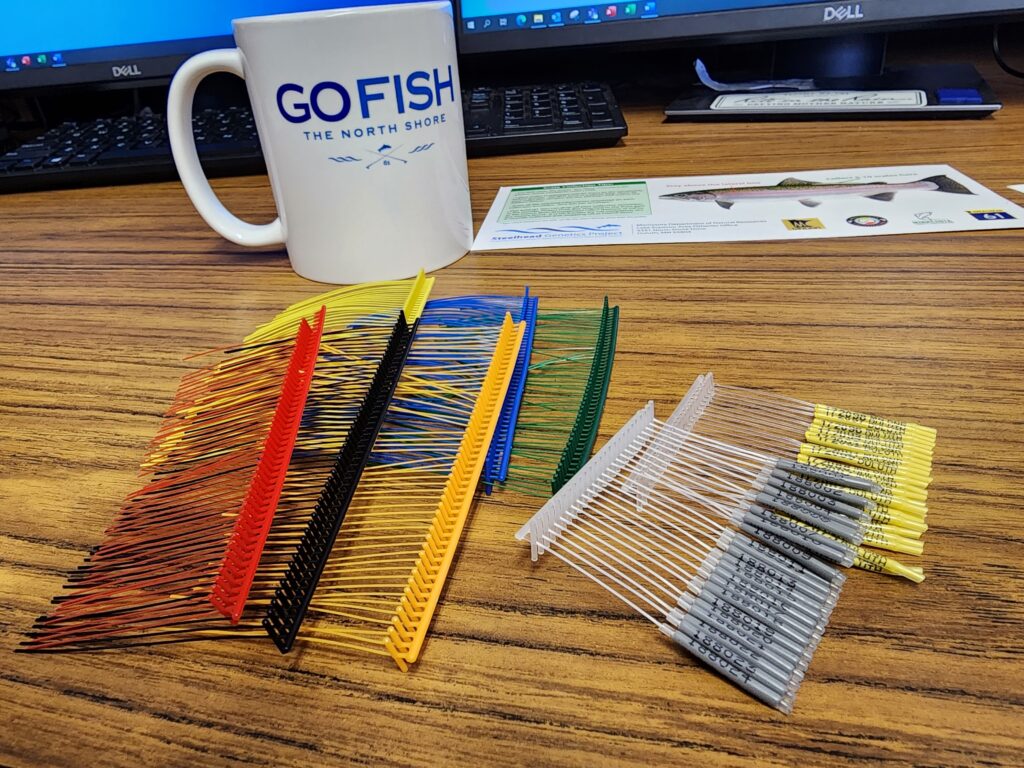

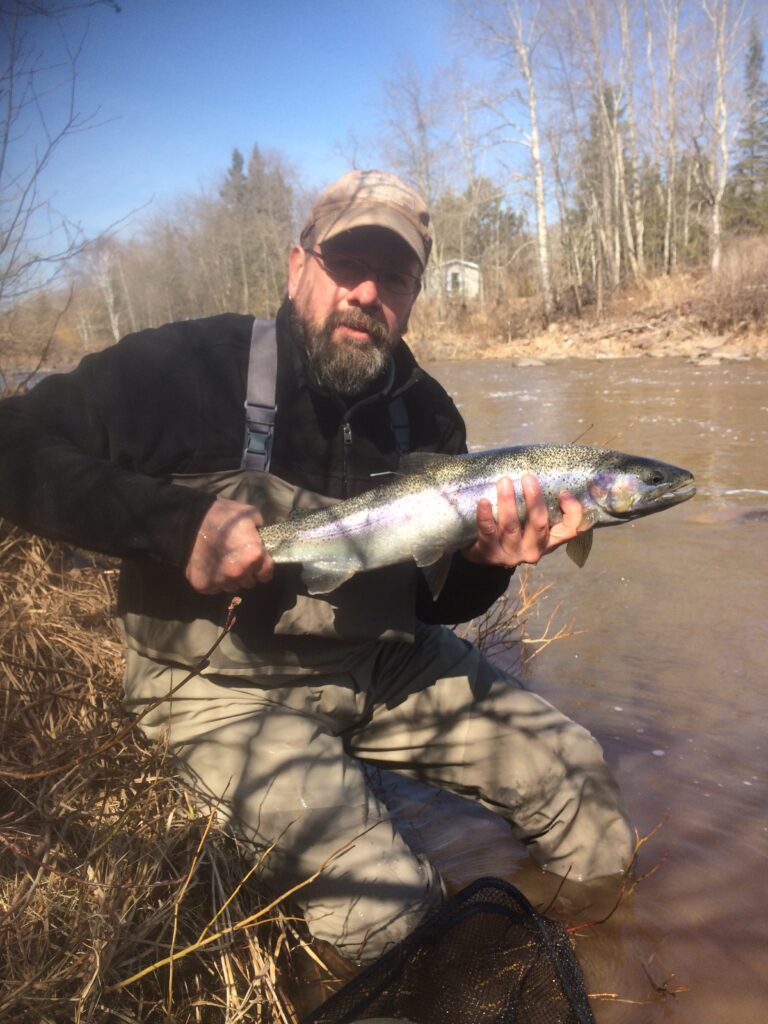
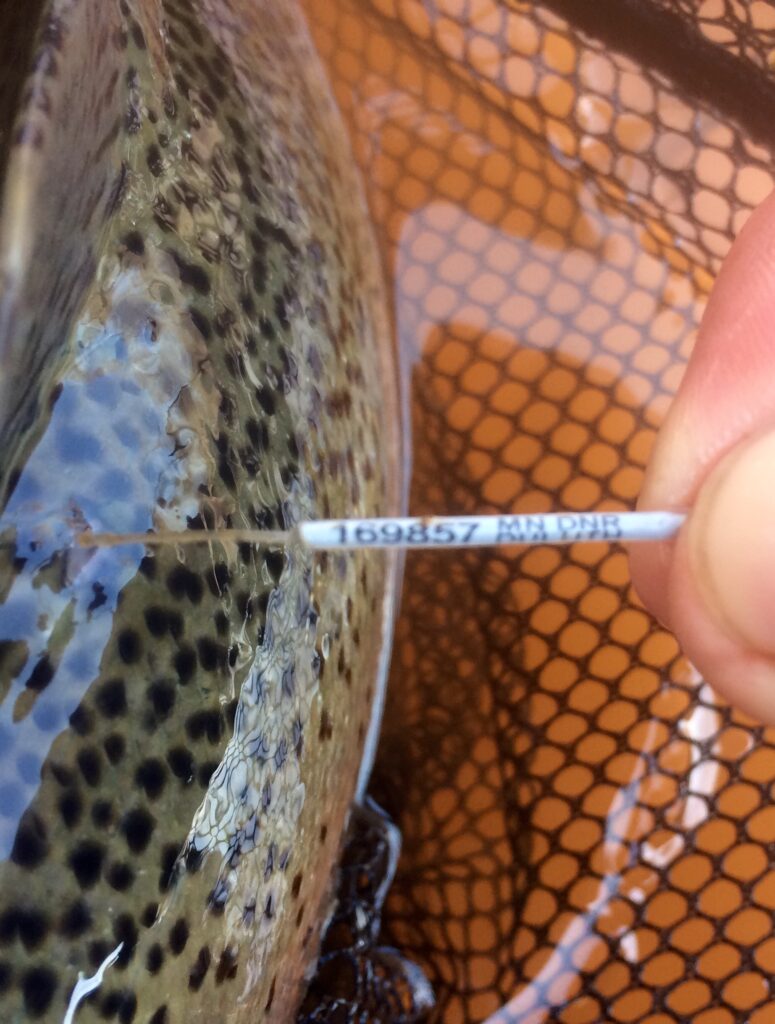
PLEASE NOTE: If you catch a tagged steelhead, leave the tag in the fish! Record the number, then report the tag number along with the date caught, location, and whether it was harvested or released. You can report directly to Lake Superior Fisheries, or use the Tagged Fish Reporting Link below. After you report a tagged fish, MN DNR fisheries will provide you with information on when and where the fish was tagged, sex, age and other interesting information. Un-clipped steelhead cannot legally be harvested, even if they have a tag.
Fin Clips
Great Lakes stocking programs, including Minnesota, use single fin clips or multiple clips in specific combinations to aid in identifying year-class, species, and program origins of stocked fish. Clip guides are typically published by each agency to assist with identification.
The illustration below identifies all of the clips by Alpha designation common to Great Lakes fisheries programs. Note that anal fins are not typically clipped.
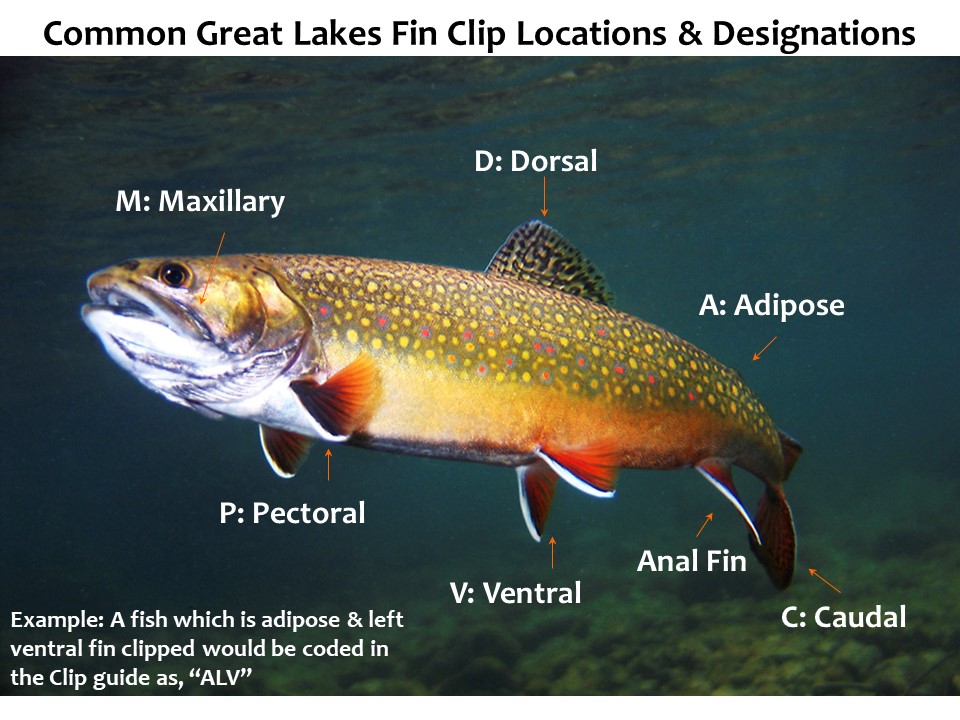
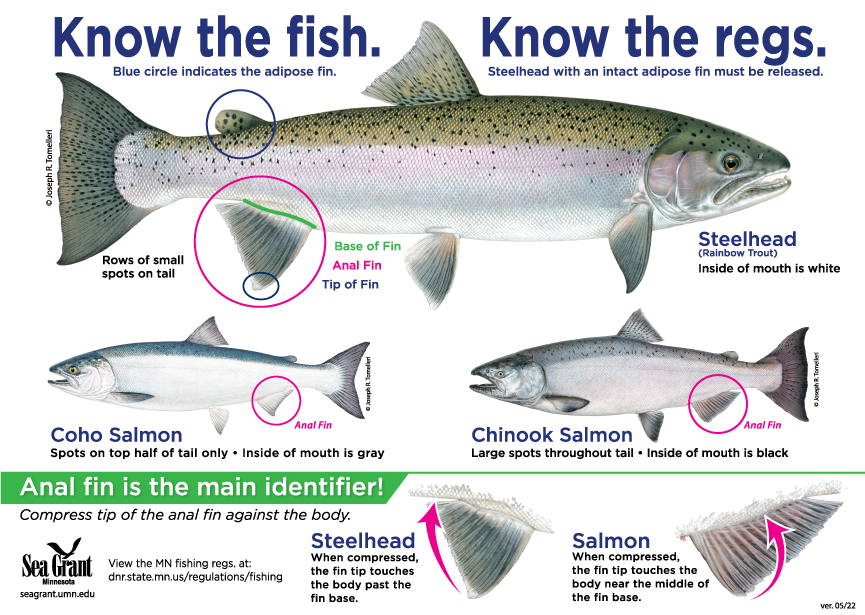
Click here to get your free “Know the Fish” decal.
Identification Links and Resources
